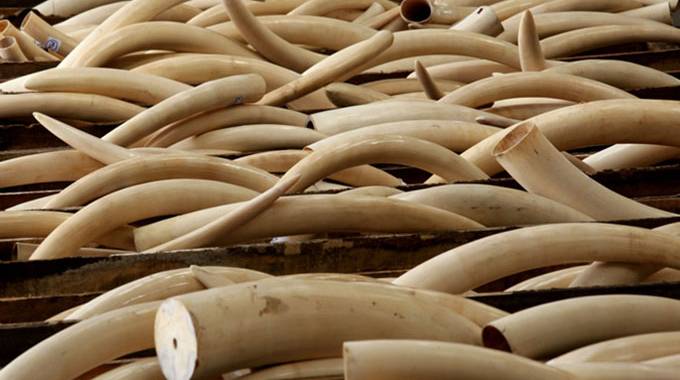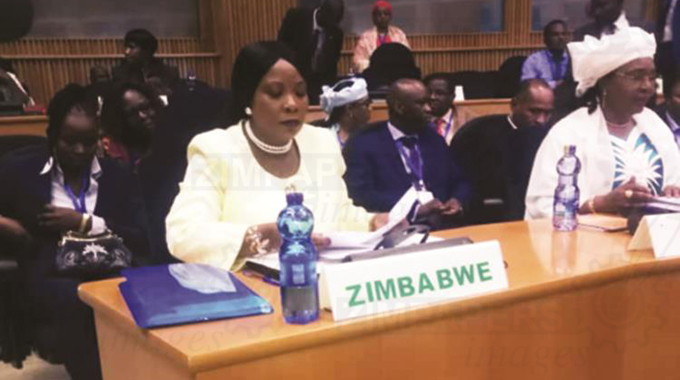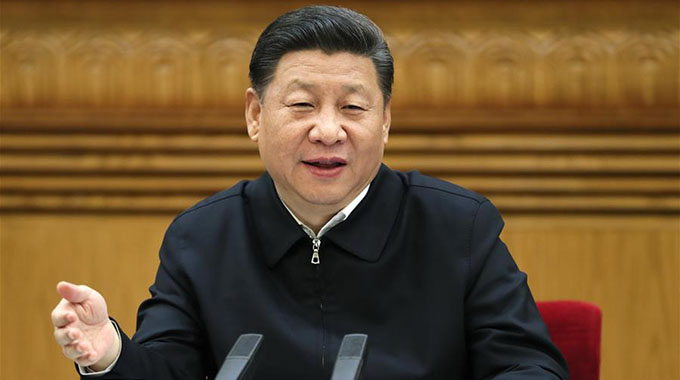Zim, 3 others seek lifting of ivory trade ban

Jeffrey Gogo Climate Story
Zimbabwe, together with Botswana, Namibia and South Africa, have applied again to Cites, the global watchdog for endangered animal species, to have a ban on the commercial trade of their registered stockpiles of ivory from the African elephant lifted.
In a charged 12-paged document, the four southern African countries are seeking to amend Annotation 2 of Cites Appendices in order to remove the restrictions – in place for almost 15 years – and allow international trade in registered raw ivory.
The proposed amendments are on the basis that previous elements of the restriction “are no longer relevant or not appropriate,” especially in view of the expiry of the nine-year moratorium on commercial ivory sales in 2017.
The matter will be heard at the upcoming biennial conference of the Convention on International Trade in Endangered Species (Cites) in Colombo, Sri Lanka, in June.
In their proposal, the states detail how the system has been rigged against them by an incapable global organisation for decades, even when they have individually shouldered the burden of conserving a growing elephant herd using scarce domestic finances, for the world’s benefit.
Zimbabwe, Botswana, Namibia and South Africa account for a combined 61 percent (or 256 000 animals) share of the remaining elephant population on the continent.
“Cites has acted as an inhibitor and not an enabler of progress,” the four countries charged in the proposal, which has already been lodged with the international wild animals body.
“The Conference of the Parties has repeatedly discounted the importance of the southern African elephant population and its conservation needs against other regions in Africa,” they said.
Citing the examples of Zimbabwe and Namibia, where rights over wildlife have been legally transferred to local communities, helping to expand elephant numbers and habitat, the self-funding proponents called out Cites’ continued rigidity as a betrayal of their dedicated efforts, in light of the scale of money needed to make wildlife protection work.
“These programmes are being undermined by arbitrary decisions by Cites that remove rather than create incentives for conservation,” they stated.
“The proponents can no longer accept that their working conservation models are undermined by an international organisation that ostensibly recognises that ‘peoples and states are and should be the best protectors of their own wild fauna and flora’; or ‘that commercial trade may be beneficial to the conservation of species . . . or to the development of local people when carried out at levels that are not detrimental to the survival of the species in question.”
Ivory money helps elephant protection
It is almost a 13 years since Zimbabwe’s last commercial sale in ivory. A once off sale of 3 700kg to Japan and China on November 1, 2008, generated about $500 000, which was duly declared to Cites. The current 70-tonne stock of ivory — the remains of thousands of elephants hunted illegally for their tusks, or those dying from natural causes — could be worth millions of dollars.
The country, with an elephant population of 80 000, the world’s second largest after Botswana’s 165 000, wants to be allowed to sell a portion of ivory inventory to help raise money to protect the African elephant, a prime target for poachers.
Until now, much of the conservation work is self-funded mainly from paltry Government budgetary allocations.
Botswana, Namibia and South Africa are also looking to Cites for approval to sale 20 000kg, 10 000kg and 30 000kg of ivory, respectively. The sales, as in Zimbabwe’s case, are motivated by the need to raise funds for conservation of the same.
The latest application by the four countries is the second within three years after the last one at the South Africa-hosted conference in 2016 was rejected by a majority of the Cites state parties.
At best, the reasons for rejection — that ivory trade fuels poaching — were flimsy. Cites is well aware these claims are unsubstantiated, false even, as amply demonstrated by the rhino horn trade ban, in place for over 40 years now.
That ban has done nothing to stop over 5 000 white rhinos from being slaughtered illegally.
But that’s just how flawed the entire system has become. A few nations with money have and continue to use their money to influence decisions by some weak and poor nations in Africa, particularly those that have had it tough protecting their wildlife.
Victims of Their Own Success
As national parks are overwhelmed by the bulging numbers of elephant, Zimbabwe, Botswana, Namibia and South Africa are clearly victims of their own success. Now, they are challenging the status quo.
In their new proposal, the countries argue that the future of the African elephant ultimately depends on “the aspirations, needs and attitudes of the people with whom they have to co-exist.”
The proponents elaborated: “Rural people have rights, rights that are far more fundamental and internationally recognised than is applied in decision-making in Cites. Such rights cannot just be ignored or discounted in favour of extraneous considerations.”
In the end, the four countries demanded that the Colombo leg of the Cites conference “to approve this proposal and thus allow the proponents, who are the parties that have demonstrably been amongst the most successful in conserving elephants, to further strengthen their conservation programmes through regulated trade in elephant products.”
God is faithful.










Comments